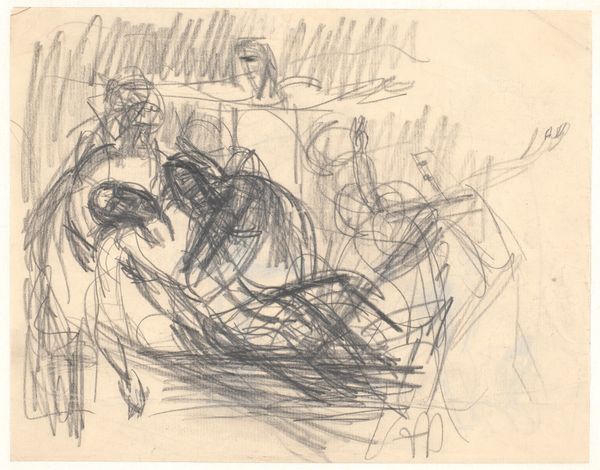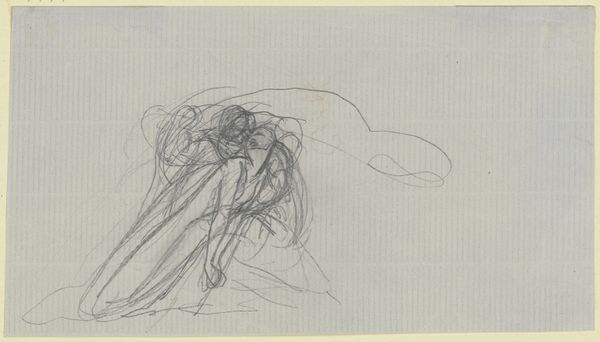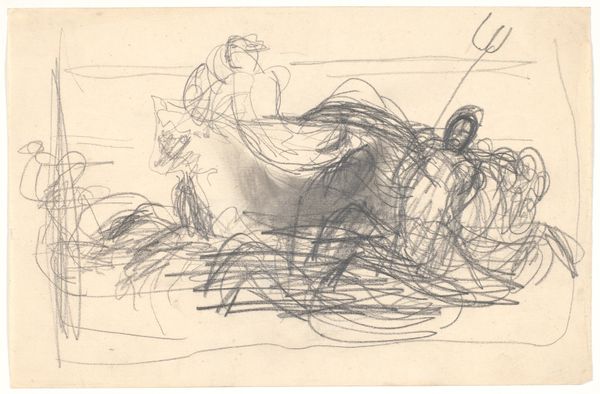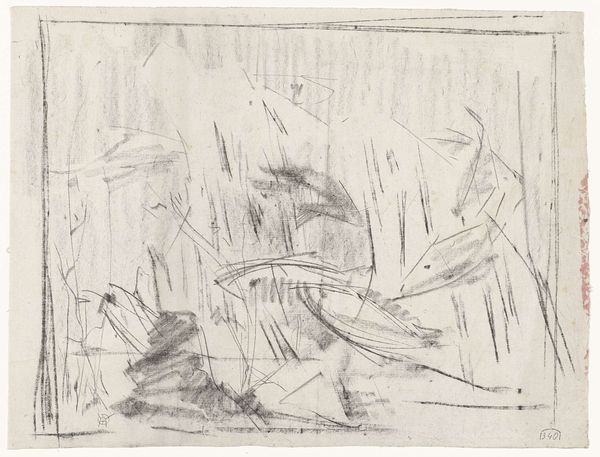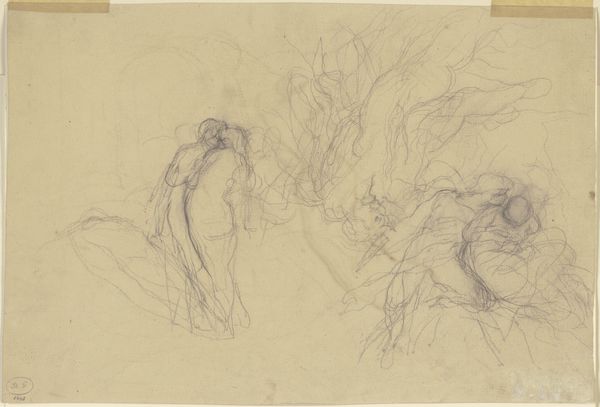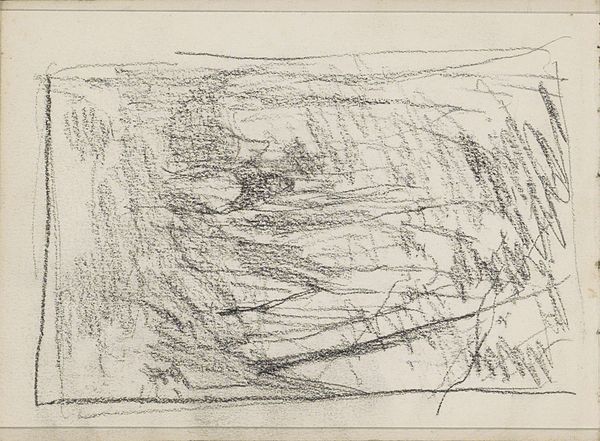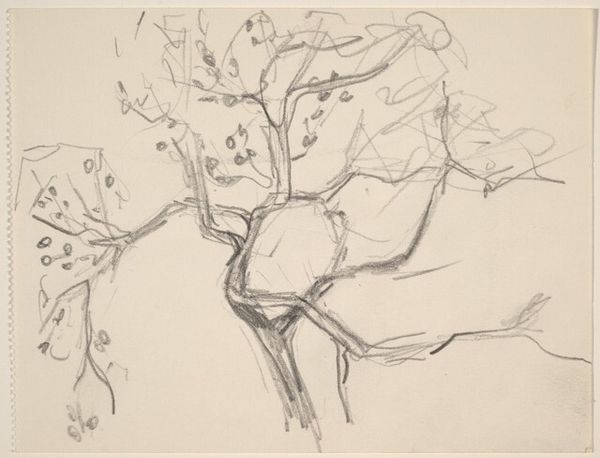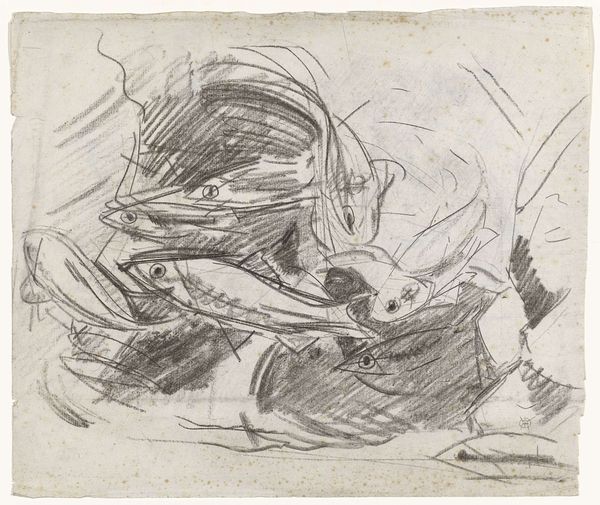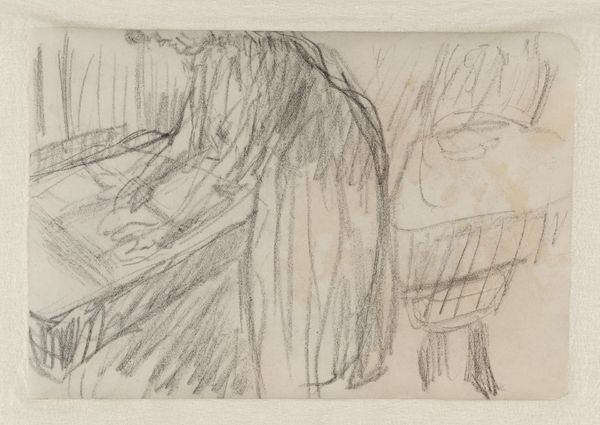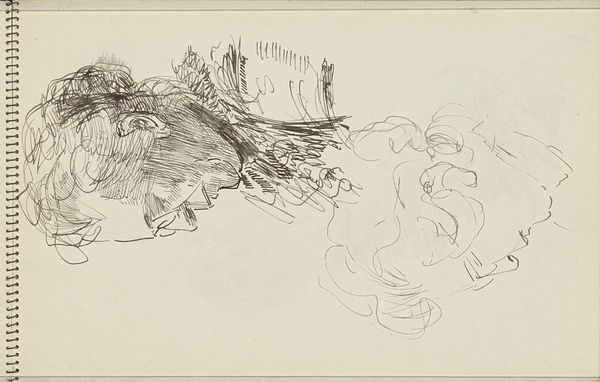
Schets van twee vrouwelijke figuren, waarvan één met opgeheven armen achterovervalt 1834 - 1898
0:00
0:00
pierrepuvisdechavannes
Rijksmuseum
drawing, pencil
#
drawing
#
amateur sketch
#
light pencil work
#
pen sketch
#
pencil sketch
#
figuration
#
personal sketchbook
#
ink drawing experimentation
#
pen-ink sketch
#
pencil
#
sketchbook drawing
#
academic-art
#
sketchbook art
#
initial sketch
Dimensions: height 103 mm, width 132 mm
Copyright: Rijks Museum: Open Domain
Pierre Puvis de Chavannes created this sketch of two female figures with graphite on paper. One figure dramatically falls backward, arms raised, a gesture known from antiquity. The raised arms have echoed through art history, signifying surrender, terror, or even ecstasy. We see it in depictions of the damned in hell, reaching out in vain, and in the rapturous poses of saints in religious art. Think of the Laocoön sculpture from ancient Greece, where the priest's agonizing struggle is mirrored in his upturned hands. This gesture transcends time, and each era imbues it with new emotional weight. Perhaps Chavannes was influenced by the Romantic fascination with intense emotion. The symbol’s continual recurrence suggests that collective memory is at play, a subconscious recognition of primal emotions that engage us on a deep level. This visual language is passed down through generations, constantly evolving. The cyclical, non-linear progression of images resurfaces throughout history, taking on new meanings.
Comments
No comments
Be the first to comment and join the conversation on the ultimate creative platform.

